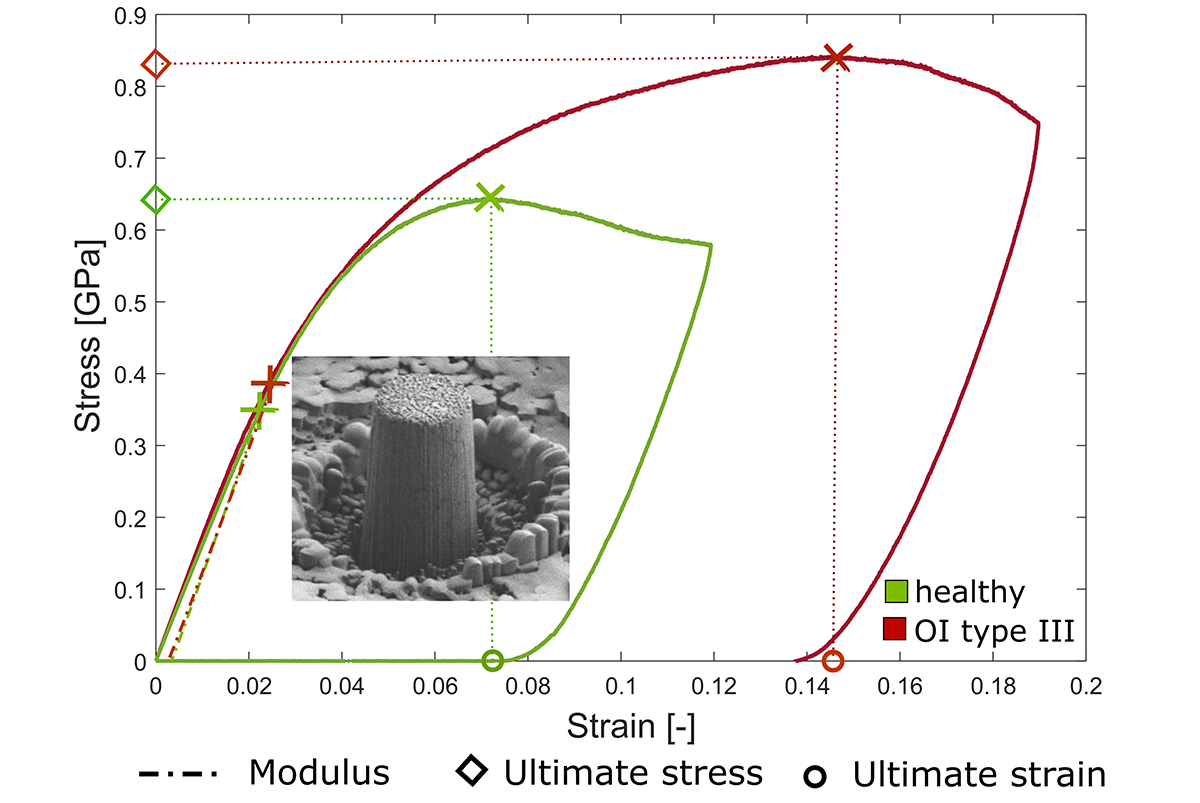2021/03/25 | Research | Biomechanics
New Insights into Osteogenesis Imperfecta
In collaboration with the EMPA, the Shriners Hospital for Children and the McGill University in Montreal, Canada, the ARTORG Musculoskeletal Biomechanics group has investigated the mechanical properties of Osteogenesis Imperfecta (OI). Results could help to better understand the origin of the increased bone fragility of the inheritable, genetic and collagen-related disorder.
 Representative stress-strain curves from micropillar compression in healthy versus OI type III iliac crest biopsies.
(© ARTORG Center for Biomedical Engineering Research, University of Bern)
Representative stress-strain curves from micropillar compression in healthy versus OI type III iliac crest biopsies.
(© ARTORG Center for Biomedical Engineering Research, University of Bern)
Due to its complex hierarchical structure, bone behaves differently at various length scales. This study with the Swiss Federal Laboratories for Material Science and Technology, EMPA, and the Shriners Hospital for Children, Montreal, and the McGill University, Montreal, aimed to compare mechanical properties of human OI bone with healthy control bone at the extra cellular matrix (ECM) level and to quantify the influence of the degree of mineralization.
Surprisingly, results of the analysis of twelve fixed and embedded trans iliac crest biopsies showed that the compressive mechanical properties of dry OI bone are not inferior to healthy control at the ECM level. The team furthermore found a strong relationship between the degree of mineralization and the ultimate strength of bone in compression. These findings give rise to the assumption that brittleness of OI bones may stem from poor bone organization at larger length-scales or deficient post-yield behavior in tension at the ECM level, which may be a dominant fracture mode in OI patients.